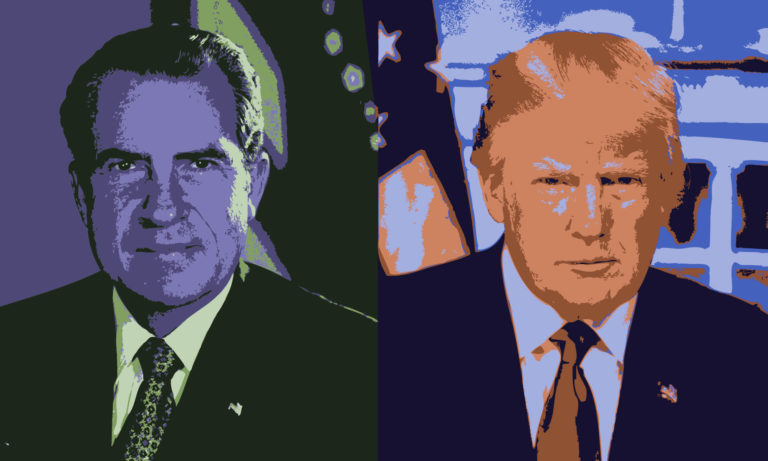Broligarchy Club
The Real Economic Villains: What Bill Burr and Kyle Kulinski Got Right
I was scrolling through YouTube last night when I stumbled across an episode of Secular Talk where Kyle Kulinski breaks down a recent Bill Burr podcast rant. What struck me wasn’t just how funny Burr’s take was, but how clearly he cut through the noise about America’s economic struggles.
The Great American Job Migration
Picture this: A factory in Michigan, 1970s. Workers earning enough to buy homes, send kids to college, take family vacations. Fast forward to today—that factory? Empty. Abandoned. A hollow shell with broken windows and faded signs.
But those jobs didn’t just disappear. They didn’t evaporate or get “stolen” by China or Mexico as we’re often told.
As Burr explains, what actually happened was much more deliberate. American corporations, tired of dealing with unions and paying living wages, simply packed up and left. They relocated to countries where they could pay workers a fraction of American wages, all while maintaining the same profit margins.
When questioned about this exodus, these companies claimed that manufacturing in America would make products unaffordable—that $50 sneakers would suddenly cost $700. What they conveniently left out was that the real issue wasn’t feasibility but maintaining their hefty profit margins.
False Villains and Misplaced Blame
Kulinski builds on Burr’s take by highlighting how today’s political landscape manipulates this economic pain. One side points fingers at immigrants and marginalized groups. The other side often pretends everything is basically fine with just a few tweaks needed around the edges.
Neither addresses the actual architects of American industrial decline.
Remember how a century ago, workers fought—sometimes literally died—for basic rights like the 8-hour workday, weekends, and workplace safety? That struggle created a period of unprecedented prosperity for the American middle class. But that prosperity threatened the unlimited profit potential of the wealthy few.
The Coming Automation Wave
While Kulinski’s analysis hits the mark, we’re now facing an even greater challenge. Walk into that same Michigan factory today—the one that once employed 5,000 workers—and you might find it operating again, but with just 50 employees overseeing an army of robots.
A paralegal once spent weeks researching case precedents. Now an AI does it in seconds. A radiologist carefully examined hundreds of medical images daily. An algorithm can now process thousands with greater accuracy.
This isn’t science fiction—it’s happening now, in small waves that will soon become a tsunami.
Remember how the automobile replaced the horse? In 1900, New York City had 100,000 horses pulling carriages. By 1912, they were virtually gone. An entire way of life—stables, blacksmiths, carriage makers—vanished in a historical blink.
We’re the horses now.
Beyond Work: Reimagining Society
The path forward isn’t just about bringing back jobs or taxing billionaires, though those are important first steps. We need to reimagine what a fulfilling human life looks like when labor is no longer the central organizing principle of society.
What happens when the marketplace no longer needs most of us?
Picture a small town center where an artist works on a mural without worrying about making rent. A retired teacher leads free community classes because she wants to, not because she needs supplemental income. A former factory worker builds custom furniture as a passion, not desperate piecework.
This is going to require:
- Universal Basic Income that provides dignity and security
- Healthcare and education as rights, not privileges
- Legal limits on wealth accumulation that’s distorting our democracy
- Meaningful protection for those who still work in the transitional economy
- New cultural frameworks for finding purpose beyond traditional employment
From Scarcity to Abundance
The irony is that automation could potentially create unprecedented abundance. The same technologies threatening livelihoods could, if properly managed, liberate us from drudgery. A machine that can produce a thousand shoes an hour doesn’t inherently mean unemployment—it could mean everyone gets shoes while humans do more meaningful work.
Our current system isn’t designed to distribute this abundance. It’s designed to concentrate it.
A handful of executives who own the automated factories, the AI systems, and the algorithms stand to capture virtually all the value created. The rest of us become increasingly expendable.
Changing the Conversation
What both Burr and Kulinski get right is that we need a new economic narrative—one that correctly identifies the actual sources of our problems rather than convenient scapegoats.
The cab driver who lives paycheck to paycheck and the factory worker whose job went overseas aren’t natural enemies. The immigrant seeking a better life isn’t the reason your wages haven’t kept up with inflation.
The enemy isn’t foreign. As Kulinski puts it, “The enemy is in the house.” It’s a system that prioritizes the accumulation of wealth for a tiny few over the wellbeing of everyone else.
As we face the automation revolution, this becomes even more urgent. We need to move beyond industrial-age thinking about work and worth to envision a future where technology serves humanity, not just shareholders.
Utopian? Perhaps. But we’re rapidly approaching a fork in the road: one path leads to unprecedented inequality, the other to possibilities our ancestors could scarcely imagine. The choice isn’t between capitalism and communism, but between a future that works for 1% or one that works for all of us.
The first step, as both Burr and Kulinski suggest, is correctly diagnosing the problem. The next is having the courage to envision something better.
Kulinski’s video:







